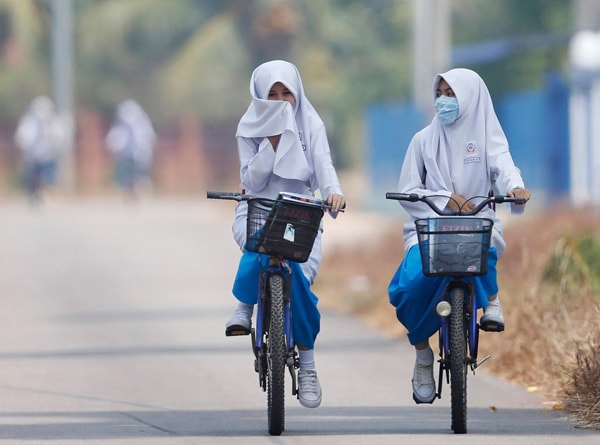300 million children are living in extremely polluted environments.
(Baonghean.vn) - According to a new study published on October 31, 90% of children in the world (equivalent to about 2 billion children) are living in places where outdoor air pollution index exceeds the limit of the World Health Organization (WHO).
According to the above calculation, 300 million children live in extremely polluted areas, where toxic smog exceeds six times international guidelines, of which 220 million live in Asia (mainly in India). There are about 70 million children living in toxic areas in East Asia (mainly in China) and 520 million in Africa.
According to the WHO, air pollution is the biggest threat to human health. And the problem is getting worse as air toxicity has increased by 8% in the past 5 years.
 |
| Children are vulnerable to air pollution, which kills 600,00 children every year. Photo: REUTERS |
Every year, 600,000 children die, more than malaria and HIV/AIDS combined. Outdoor and indoor pollution also contributes to about 6 million deaths.
Children are more affected because they breathe faster than adults, making their lung cells more permeable to pollution particles, according to reports from the United Nations Children's Fund (Unicef). These tiny particles cross the blood-brain barrier, where children have lower immunity, and can cause permanent damage to cognition and future prospects. Toxic dust inhaled by pregnant women can also penetrate and harm the fetus.
The air pollution crisis is worst in low- and middle-income countries, where 98% of cities do not meet WHO guidelines. However, 50% of cities in rich countries do not meet these standards either.
In Europe, 120 million children live in areas where outdoor pollution exceeds safe levels, and 20 million are exposed to pollution levels twice the limit.
Unicef has called on all countries to do their part in reducing air pollution by reducing the use of fossil fuels in power plants and vehicles. This would also help tackle climate change.
UNICEF also recommends protecting children by ensuring sources of pollution such as busy roads and factories are not located near schools and playgrounds, or by using clean cooking stoves./.
Thanh Hien
(According to the Guardian)
| RELATED NEWS |
|---|

.jpg)





.jpg)
